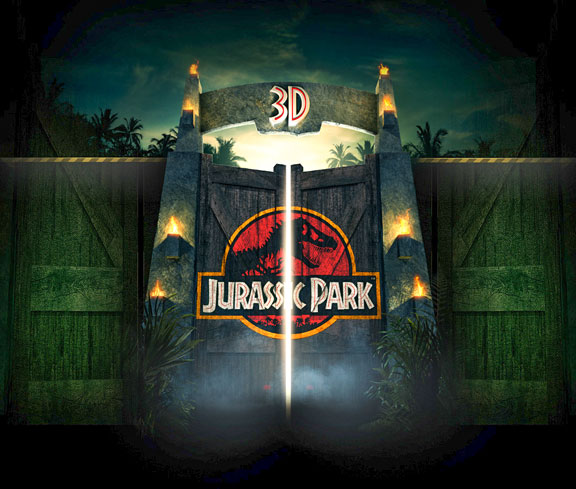
“Jurassic Park 3D” stomped into theaters last weekend and made an impressive $18.6 million. With 3D post-conversions costing between $10 million and $20 million and advertising probably costing around $12 million more, it looks like the re-release will make money for Universal Pictures. But how long will audiences keep paying to watch movies they’ve already seen before?
3D, for better or worse, has been a huge component of movie revenue since “Avatar.” In 2010, almost 15 percent of market share from the top five movie studios in the U.S. came from 3D. The amount of money made from 3D has decreased slightly since then, but it’s obvious that, unlike in the 50s, 3D is here to stay.
Part of almost every major studio’s 3D strategy nowadays is to re-release popular movies from their archives. Movies that have sold exceptionally well on home video or get a lot of play on television are usually picked for 3D post-conversion because they have high replay value for audiences, so studios assume that people will be willing to shell out money to see these movies again.
The first significant 3D re-release in recent years actually happened a couple of months before “Avatar.” In October 2009, Disney released a double-bill of “Toy Story” and “Toy Story 2” which eventually made $30.7 million. But because that was pre-“Avatar,” the 3D didn’t get much attention. “The Lion King,” re-released in 2011, turned heads when it debuted to No. 1 at the box office in September, stayed at the spot for a second week and made $94.2 million. But since then, the grosses for Disney’s 3D re-releases have declined. “Beauty and the Beast” made much less — only $47.6 million domestically in 2012. Later that year, “Finding Nemo,” despite being the best-selling home video release of all time, made only $41.1 million in a 3D run. And just last year, “Monsters Inc.” made only $33.8 million in a 3D re-release. Studios are trying to figure out if re-releasing popular home video movies is a good strategy. Sure, people might want to watch Rafiki raise Simba on the promontory of Pride Rock or Dory urging Nemo to just keep swimming, just keep swimming, just keep swimming, but maybe not too many people would pay to watch it in theaters at an increased price when they already own the movie on DVD.
To keep the “Star Wars” gravy train going, Fox is re-releasing all of the “Star Wars” films in 3D. However, they decided to go in numerical order and begin with “The Phantom Menace,” which had enough fans to pull in $43.5 million domestically. Disappointed by the grosses, Lucasfilm initially decided to cut marketing costs by releasing “Episode II” and “Episode III” at the same time, but later shut down the project altogether to focus on “Episode VII.”
“Titanic,” the highest-grossing film of all time before “Avatar,” is an important part of this story. The movie made $57.8 million domestically, but its big success was overseas. Elsewhere, it made an incredible $285.7 million. $145 million came from China, where the movie was never released before.
And that’s where the money lies for a 3D re-release. A few tens of millions in theatrical grosses in the domestic market isn’t a big deal when it comes to covering the costs of converting a movie to 3D, especially when marketing costs are factored in. The big money comes from overseas, in markets such as China and Russia, where theater-going has increased significantly in the past couple of decades. So many people in those markets never got a chance to see these popular movies in theaters, and a 3D re-release gives them the opportunities to do so.
Furthermore, a 3D re-release is an investment in the future. It’s only a matter of time until 3D-capable televisions are standard in every home. For home releases that have sold well, such as “Titanic,” the “Star Wars” series, Disney family movies and, most recently, “Jurassic Park,” 3D Blu-rays will make plenty of money in their own right.


